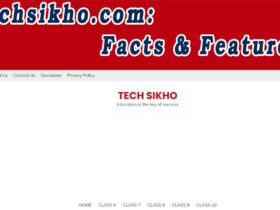You will find various tools available in the market for data visualization, but Tableau is one tool predominantly used in the BI industry.
If you are looking for ways to transform raw data into an understandable format, Tableau is ideal. You can use this tool to create dashboards and worksheets after analyzing the data precisely.
You can access data stored in different places or platforms, from simple excel databases to complex databases like Oracle in the cloud. From Microsoft Azure SQL to Google Cloud and Amazon web services, Tableau helps to retrieve from various data sources.
Though you have many options, professionals consider using Tableau on AWS for optimized performance. Many companies now know how Tableau can streamline their data visualization process. On average, data scientists or analysts spend nearly 80% time in data preparation.
It clearly shows professionals who work only spend a few hours participating in activities that increase profitability. Besides data preparations, data scientists must analyze data, find valuable insights, create actionable tests, and combine cohesive stories for stakeholders.
Tableau can be an effective tool to elevate your business process. Continue reading to know how Tableau can accelerate your digital transformation.
Less time to retrieve data
Extracting data from various resources and combining them can consume more time than expected. Moreover, the data insights are vulnerable to mistakes due to manual intervention.
Tableau incorporates data connections and preparation tools, making an analyst’s life easier. With the tools, you can turn raw data into a usable format without spending more time. Now, your team can concentrate on productive tasks like data analysis.
Retrieve data from different platforms
From Google Analytics to Excel and Salesforce.com, Tableau has more than 100 built-in data connections. When you combine the same column names in different platforms, use Tableau to integrate data into one source.
You don’t have to spend time copying and pasting data across diverse data sources. Merging the data with Tableau will provide a centralized view, and you don’t have to go through different reports to understand the story.
Easy to access large data
Vast data is challenging to handle with essential tools like Excel; subsequently, you need to verify the authenticity of the data. Tableau allows professionals to analyze millions of rows at a fast pace. The tool is designed to scale so that it won’t take a long processing time.
High-end visualizations and precise insights
Tableau’s most amazing in-built feature is visualization. You can process raw data and turn it into beautiful visualizations accordingly. You can explore a massive volume of data in minutes and drill the available data in various ways. When you observe data and visualization from a different perspective, you will yield detailed insights.
User-friendly dashboards
Some companies prefer the deployment of Tableau on AWS, whereas others prefer a different cloud source. One of the astounding features of the Tableau tool is the user-friendly approach across various platforms.
Professionals who are novices in coding or have no coding knowledge can use the tool, as the software provides many drag-and-drop features.
Moreover, every company has a unique workload as the employees are different, leverage individual data, and have business requirements that differ from other companies.
Wrapping up
Many fortune 500 companies use the Tableau tool, and at least 50,000 companies in the BI industry use this exceptional tool. From breaking down big data to solving business-related problems, Tableau is one effective BI tool that you can use. Ensure that you include revolutionary technologies to supercharge the Tableau dashboards.











